U-SQL Database Projects were released today (see here for the announcement from Microsoft) and it promises easier development and deployment. I’ve blogged in the past about using PowerShell to deploy U-SQL scripts, and I’ve worked with the older “U-SQL Project” project quite a bit, so I wanted to try the new project out as quickly as I could to see what it has to offer.
Once you’ve updated to the latest version of ADL Tools, you’ll be able to select the new project type:
Developing
The project contains a number of database object templates, allowing you to get off the mark quickly with development, and the project allows all of the usual visual studio organization with folders, and intellisense in the code editor.
Object templates available:
Here’s the template of a Procedure Script item:
Source Control
The projects integrates much more nicely with TFS than the older “U-SQL Project” does.
It actually gives you the icons (padlock, check mark, etc..) in the solution explorer, so it actually looks like it’s under source control!
Something that I’d really hoped had been fixed, but hasn’t, is when copying and renaming an existing item, it doesn’t recognize the rename. You have to undo the checkout of the non-existent object (the copy, before being renamed):
Something that has been fixed is that with the older project style, you wouldn’t be able to edit the “Procedure2.usql” item from my previous example until you’d checked it in – now you can!
Deployment
Where you’re deploying to is controlled by the Cloud Explorer in Visual Studio and which Data Lakes you have access to. By right clicking and selecting deploy on the project, you are presented with a simple dialogue box where you select which Data Lake Analytics account, making it nice and easy to deploy to development vs UAT, etc…
The Database Name specified in this textbox is the name of the database your project will be deployed to. Unfortunately, it is just a free form textbox, so be careful of any typos!


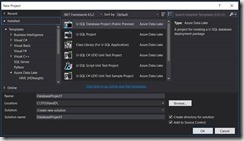
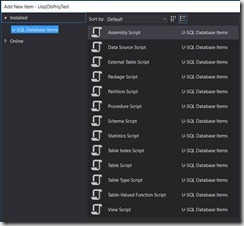
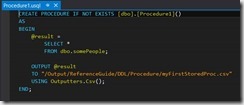
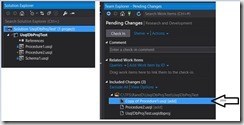
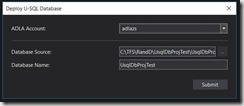
Introduction to Data Wrangler in Microsoft Fabric
What is Data Wrangler? A key selling point of Microsoft Fabric is the Data Science
Jul
Autogen Power BI Model in Tabular Editor
In the realm of business intelligence, Power BI has emerged as a powerful tool for
Jul
Microsoft Healthcare Accelerator for Fabric
Microsoft released the Healthcare Data Solutions in Microsoft Fabric in Q1 2024. It was introduced
Jul
Unlock the Power of Colour: Make Your Power BI Reports Pop
Colour is a powerful visual tool that can enhance the appeal and readability of your
Jul
Python vs. PySpark: Navigating Data Analytics in Databricks – Part 2
Part 2: Exploring Advanced Functionalities in Databricks Welcome back to our Databricks journey! In this
May
GPT-4 with Vision vs Custom Vision in Anomaly Detection
Businesses today are generating data at an unprecedented rate. Automated processing of data is essential
May
Exploring DALL·E Capabilities
What is DALL·E? DALL·E is text-to-image generation system developed by OpenAI using deep learning methodologies.
May
Using Copilot Studio to Develop a HR Policy Bot
The next addition to Microsoft’s generative AI and large language model tools is Microsoft Copilot
Apr